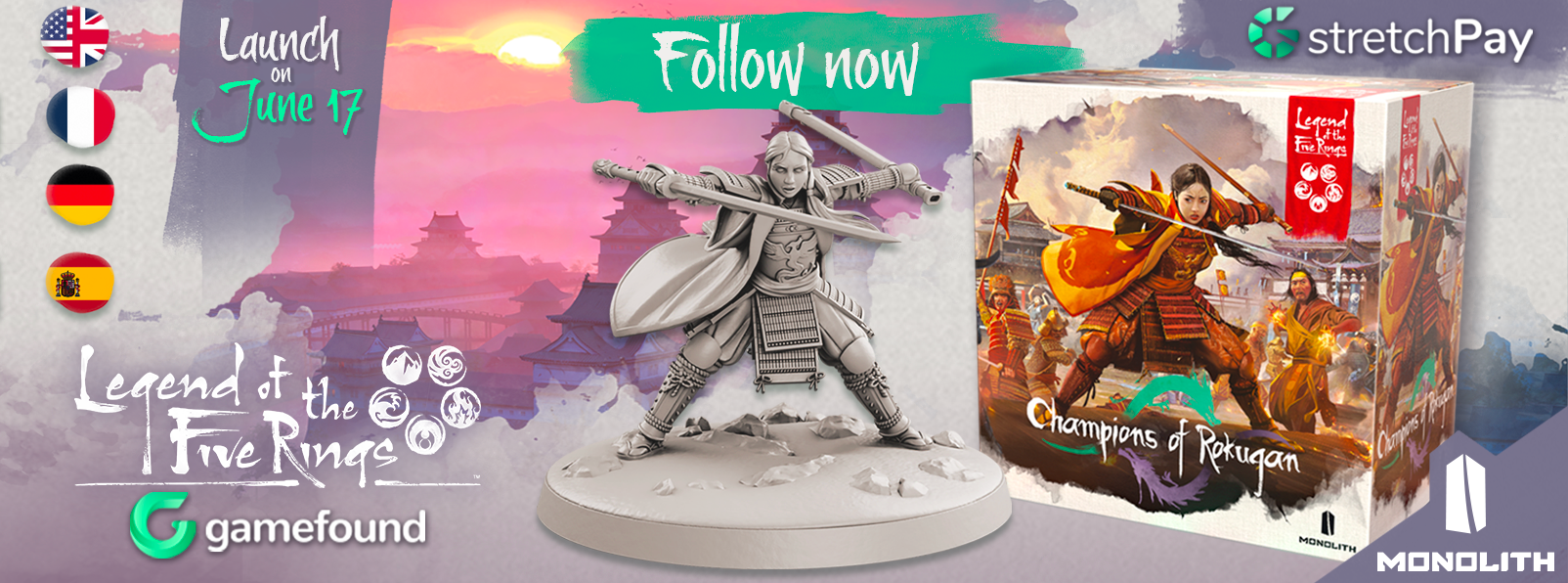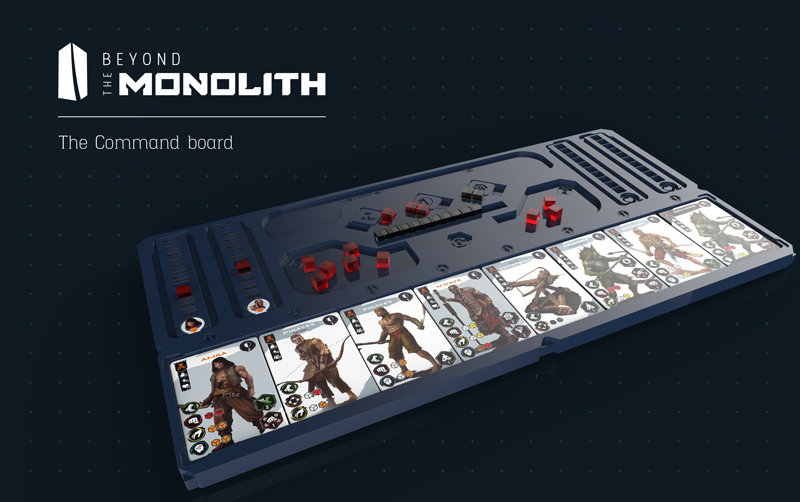-
Beyond The Monolith, An overview of the Core System game mechanic.
-
Version française : Beyond The Monolith, le système en quelques lignes
-
Disclaimer: The following micro article doesn’t cover the entirety of the game rules, just a simple overview of the core mechanics.Quick OverviewBeyond The Monolith is a tactical system of scripted confrontations between 2 or 4 opponents. Simple, but with incredible depth, it allows each player to draft their squad before heading into battle. Learning the core rules takes between 5 to 10 minutes, and games rarely exceed 45 minutes.Each Commander uses a Command Board to control his squad, activate their units, and manage system actions.
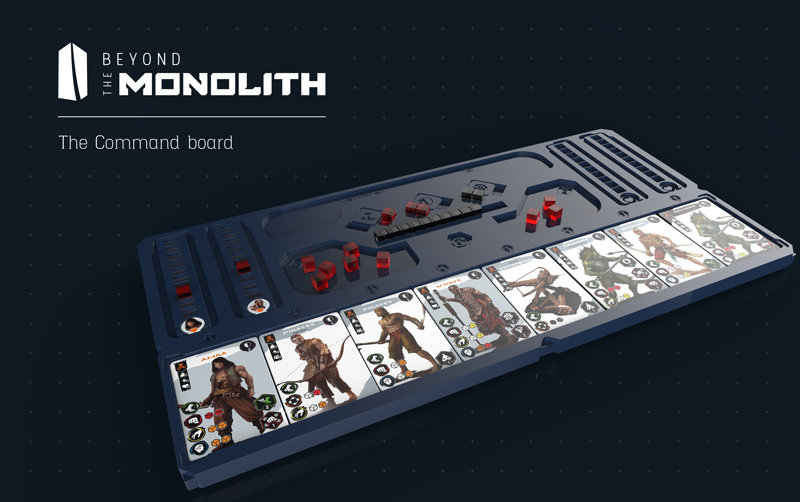 Each unit is represented by a tile, which in turn is associated with one or more miniatures. Recruitment cost and all the necessary gameplay information is depicted on each tile.Heroes have life points which are tracked on the Command Board.
Each unit is represented by a tile, which in turn is associated with one or more miniatures. Recruitment cost and all the necessary gameplay information is depicted on each tile.Heroes have life points which are tracked on the Command Board.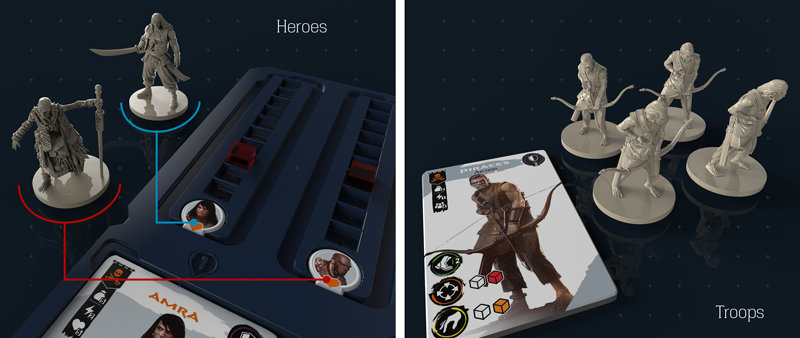 While troop units have only one life point, but several troop members (miniatures).During their turn, a commander can activate a tile (hero or Troop) by spending energy cubes equal to the tiles position in the river. That tile is then placed at the end of the river in the slot to the right of the final tile. Therefore, the more often a specific unit is activated, the higher its average activation cost becomes. In contrast, the fewer times a specific unit is activated, the lower its average activation cost becomes.Once a tile has been activated, the miniature(s) that tile represents can move, perform an action (melee combat, ranged combat, manipulate objects, or concentrate on a specific thought…} Resolution of those actions are usually decided by a roll of a dice pool that corresponds to the attribute that unit used.Let’s zoom in on the core mechanicThe Energy cycleEach Squad can access a power pool that consists of the sum of energy cubes contributed by each unit.. These Energy cubes circulate in a cycle dictated by costs (Activations – see above, Point Improvements – see below) and Recovery (5 Energy cubes are recovered at the beginning of each new turn)
While troop units have only one life point, but several troop members (miniatures).During their turn, a commander can activate a tile (hero or Troop) by spending energy cubes equal to the tiles position in the river. That tile is then placed at the end of the river in the slot to the right of the final tile. Therefore, the more often a specific unit is activated, the higher its average activation cost becomes. In contrast, the fewer times a specific unit is activated, the lower its average activation cost becomes.Once a tile has been activated, the miniature(s) that tile represents can move, perform an action (melee combat, ranged combat, manipulate objects, or concentrate on a specific thought…} Resolution of those actions are usually decided by a roll of a dice pool that corresponds to the attribute that unit used.Let’s zoom in on the core mechanicThe Energy cycleEach Squad can access a power pool that consists of the sum of energy cubes contributed by each unit.. These Energy cubes circulate in a cycle dictated by costs (Activations – see above, Point Improvements – see below) and Recovery (5 Energy cubes are recovered at the beginning of each new turn)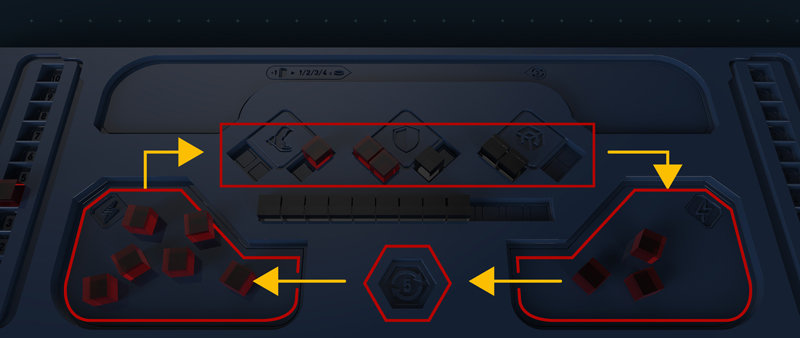
-
Ephemeral characteristic ImprovementsAfter activating a tile, a Commander can briefly improve the Movement and Re-roll attributes of that tiles miniature(s) by spending Energy Cubes and placing them in the slots provided. Using the same mechanic, a Commander can improve the Defense attribute of a tile that is under attack. Each enhancement type, Movement, Defense and Re-roll has 4 slots in which to place the spent Energy Cubes.
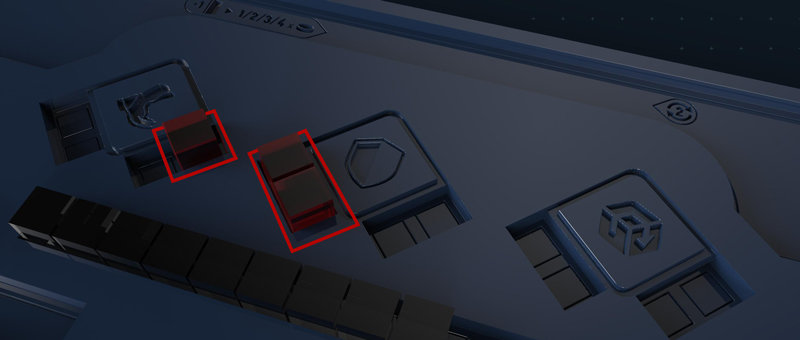 Additional activationsA Commander can also choose to perform additional tile activations after their initial tile activation. However additional activations come at a cost – Strain cubes, that incrementally block Enhancement Energy cube slots. Thus, in addition to its Energy Cube cost, the first additional activation of a turn blocks one Enhancement Energy Cube payment slot with a Strain Cube. The second would block two slots. The third…. three… A Commander therefore has a choice of strategies, ranging from situational hyper- aggression (chaining up to 5 activations in the same round, but at the cost of sacrificing all their Enhancement Energy Cube payment slots), to an ultra -conservative approach that allows the maximum tactical spread of Enhancement possibilities.
Additional activationsA Commander can also choose to perform additional tile activations after their initial tile activation. However additional activations come at a cost – Strain cubes, that incrementally block Enhancement Energy cube slots. Thus, in addition to its Energy Cube cost, the first additional activation of a turn blocks one Enhancement Energy Cube payment slot with a Strain Cube. The second would block two slots. The third…. three… A Commander therefore has a choice of strategies, ranging from situational hyper- aggression (chaining up to 5 activations in the same round, but at the cost of sacrificing all their Enhancement Energy Cube payment slots), to an ultra -conservative approach that allows the maximum tactical spread of Enhancement possibilities.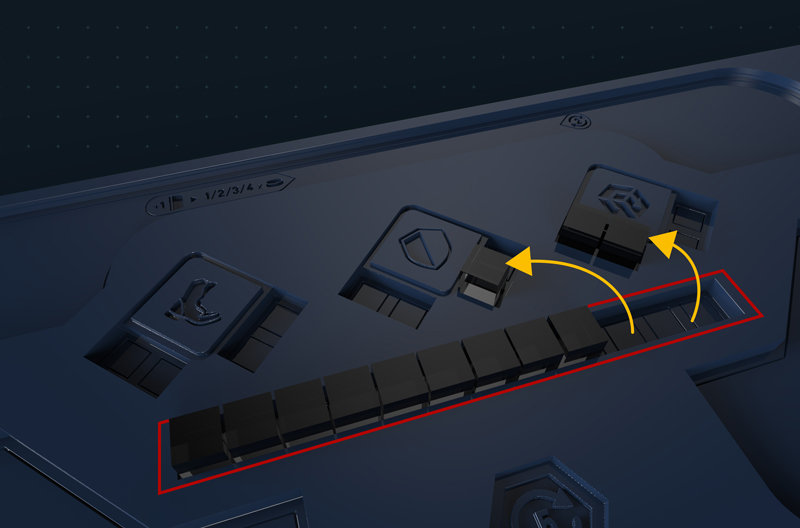
Dice, Average and Variance
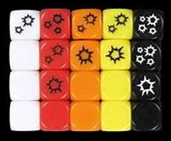
A dice pool roll resolves the outcome of each attempted action. There are 5 types of dice (colors). Each type is defined by two characteristics – its average and its variance. Grasping these two concepts is essential to play well because two dice with same average, can behave way differently when trying to reach the same success threshold or when attempting a re-roll. For example: to reach a success threshold score of 3 using a dice whose average roll is 1.5, would you prefer a distribution of 0-1-1-2-2-3 over its sides, or 0-0-0-1-4-4? But to exceed 1 ? The same logic applies to Re-rolls : the higher the variance, the higher your return on investment on each spent Energy Cube. Imagine a die whose average is 1, whose side/face distribution is 1- 1-1-1-1-1, and another die that has a side/face distribution of 0-0-0-0-0-6, knowing that the highest result will be kept, which die increase its average when performing Re-rolls ? Obviously, in the heat of gameplay, those choice criteria become more difficult to discern...
Thanks for the reading...


